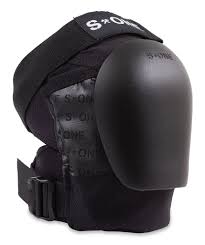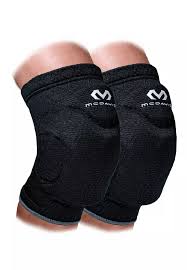Unraveling the Science of Knee Pads: Protection, Comfort, and Performance
A knee pad is a protective gear worn over the knee to provide cushioning and support, particularly during activities involving kneeling or impacts on the knees. They offer comfort and help alleviate discomfort or pain associated with pressure on the knee joint. While they can provide relief, it's important to seek professional medical advice for persistent or severe knee issues.
Understanding the Benefits of Knee Pads

Knees are one of the most crucial joints in the human body, bearing the weight and stress of daily activities. Whether it's during sports, construction work, gardening, or various other tasks, knees can often be subjected to strain and impact. This is where knee pads come into play. Designed to provide essential protection and support, knee pads have become an indispensable piece of equipment for individuals across a wide range of industries and activities.
Types of Knee Pads
Knee pads are available in various types, each designed to cater to specific needs and activities.
- Hard-Shell Knee Pads:
- Description: Hard-shell knee pads feature a rigid outer shell made of materials like plastic or polyethylene. They are designed to provide maximum protection against sharp objects and hard surfaces.
- Applications: Commonly used in construction, woodworking, and industrial settings where the risk of encountering rough or abrasive surfaces is high.
- Soft-Shell Knee Pads:
- Description: Soft-shell knee pads are constructed with flexible materials, typically foam or gel, that conform to the shape of the knee. They offer excellent cushioning and are favored for tasks that involve prolonged kneeling.
- Applications: Ideal for gardening, landscaping, DIY home improvement projects, and any activity that requires extended periods of kneeling.
- Hybrid Knee Pads:
- Description: Hybrid knee pads combine elements of both hard-shell and soft-shell designs. They offer a balance between impact protection and comfort, making them versatile for a wide range of activities.
- Applications: Suitable for sports like basketball or volleyball, as well as construction tasks that require a combination of protection and flexibility.
- Sleeve-Style Knee Pads:
- Description: Sleeve-style knee pads are designed to slide over the leg and fit snugly around the knee. They are lightweight and provide moderate protection.
- Applications: Popular among athletes in sports like soccer and skateboarding, as well as for activities that involve moderate impact risks.
- Tactical Knee Pads:
- Description: Tactical knee pads are specifically designed for military and law enforcement personnel. They often feature additional features like reinforced caps, extra padding, and secure fastening systems.
- Applications: Used by military, police, and security personnel during tactical operations and training.
- Medical Knee Pads:
- Description: Medical knee pads are designed to provide support and protection for individuals with knee injuries or conditions. They may have specialized features for stability and joint alignment.
- Applications: Used in rehabilitation settings, for individuals recovering from knee surgery, or those with chronic knee issues.
- Volleyball Knee Pads:
- Description: Volleyball knee pads are designed with specific considerations for the sport, providing protection against impact and friction during dives and falls.
- Applications: Essential for volleyball players to prevent knee injuries during play.

Materials Used in Knee Pads
Knee pads are crafted using a variety of materials, each chosen for its specific properties and intended application.
- Foam:
- Description: Foam is a versatile material known for its cushioning and shock-absorbing properties. It comes in various densities, providing different levels of comfort and impact protection.
- Applications: Foam is commonly used in soft-shell knee pads, providing excellent cushioning for activities that involve prolonged kneeling, such as gardening or floor installation.
- Gel:
- Description: Gel inserts are often incorporated into knee pads to enhance comfort and distribute pressure evenly across the knee. The gel conforms to the shape of the knee, providing a customized fit.
- Applications: Gel inserts are especially effective in reducing discomfort during extended periods of kneeling, making them popular in professions like construction or flooring installation.
- Neoprene:
- Description: Neoprene is a synthetic rubber known for its durability, flexibility, and water resistance. It is commonly used in the construction of sleeve-style knee pads.
- Applications: Sleeve-style knee pads made from neoprene provide a snug fit and offer moderate protection against impacts and abrasions. They are favored in sports like skateboarding and martial arts.
- Plastic or Polyethylene:
- Description: These rigid materials are employed in hard-shell knee pads to provide maximum impact resistance. They are highly effective in protecting against sharp objects and rough surfaces.
- Applications: Hard-shell knee pads with plastic or polyethylene caps are essential in high-risk environments, such as construction sites, where protection against sharp or abrasive surfaces is paramount.
- EVA (Ethylene Vinyl Acetate):
- Description: EVA is a lightweight and durable foam material known for its shock-absorbing properties. It is often used in the construction of midsole cushioning in athletic footwear and can also be found in knee pads.
- Applications: Knee pads with EVA padding are suitable for activities that involve impacts or shocks, providing added protection for the knees.
- Memory Foam:
- Description: Memory foam is a specialized type of polyurethane foam that contours to the shape of the body, providing customized support and pressure relief.
- Applications: In knee pads, memory foam enhances comfort and ensures an ergonomic fit. It's commonly used in high-end or specialized knee pad designs.
What is the purpose of knee pads
The primary purpose of knee pads is to provide protection and support to the knees during various activities.
- Impact Protection:
- Knee pads are designed to absorb and disperse the force of impacts, helping to prevent injuries from falls, collisions, or contact with hard surfaces.
- Cushioning and Comfort:
- They are equipped with padding materials, such as foam or gel, that cushion the knees and distribute pressure evenly. This reduces discomfort and fatigue, especially during tasks that involve kneeling for extended periods.
- Preventing Abrasions and Scrapes:
- Knee pads with a durable outer shell, such as those made from plastic or polyethylene, protect against abrasions and scrapes from rough or abrasive surfaces.
- Support for Injured or Weak Knees:
- Individuals with existing knee injuries or conditions may use knee pads to provide additional stability and support to the joint, helping to alleviate pain and prevent further damage.
- Enhancing Performance in Sports:
- Athletes, particularly those in high-impact sports like basketball, volleyball, and skateboarding, use knee pads to safeguard against injuries during dynamic movements, jumps, and falls.
- Preventing Long-term Joint Damage:
- By reducing the impact and stress on the knees, especially in professions or activities that involve repetitive kneeling or crawling, knee pads help prevent long-term wear and tear on the joint.
- Maintaining Mobility and Functionality:
- Knee pads enable individuals to perform tasks that require kneeling or crawling with confidence and without fear of discomfort or injury. This is crucial in professions like construction, flooring installation, and gardening.
- Safety Compliance:
- In certain industries, such as construction and manufacturing, the use of knee pads may be mandated by safety regulations to mitigate the risk of knee injuries among workers.
- Rehabilitation and Recovery:
- Knee pads can play a role in the rehabilitation process for individuals recovering from knee surgery or injury. They provide gentle support and protection during the healing process.

Can I sleep with knee pads on
While it is technically possible to sleep with knee pads on, it is generally not recommended for several reasons:
- Restricted Blood Flow: Wearing knee pads for an extended period, especially while lying down, may potentially restrict blood flow to the area. This can lead to discomfort or even cause circulation issues over time.
- Discomfort and Irritation: The straps or material of knee pads may cause discomfort or irritation during prolonged wear, which can disrupt sleep.
- Limited Mobility: Wearing knee pads while sleeping may limit your ability to move comfortably during the night, which could impact the quality of your sleep.
- Potential Impact on Sleep Quality: Uncomfortable or restrictive knee pads may make it harder for you to fall asleep or stay asleep, leading to a less restful night's rest.
If you're experiencing knee pain or discomfort that is severe enough to consider wearing knee pads while sleeping, it's advisable to consult a healthcare professional. They can provide proper guidance on managing your knee pain and may recommend specific treatments or interventions to address the underlying issue. They can also provide personalized advice on whether using knee pads at night is appropriate for your specific situation.
Do knee pads stop knee pain
Knee pads can provide some relief from knee pain, especially in situations where the pain is caused or exacerbated by pressure, impacts, or friction on the knees. They offer cushioning and support, which can help alleviate discomfort during activities that involve kneeling or putting weight on the knees.
Knee pads, though seemingly unassuming, play a vital role in ensuring the longevity and functionality of our knees. From the construction site to the basketball court, they serve as the unsung heroes, providing protection and comfort where it matters most. Understanding the science behind knee pads allows us to make informed choices, ensuring that our knees remain resilient and ready for whatever challenges come their way.



